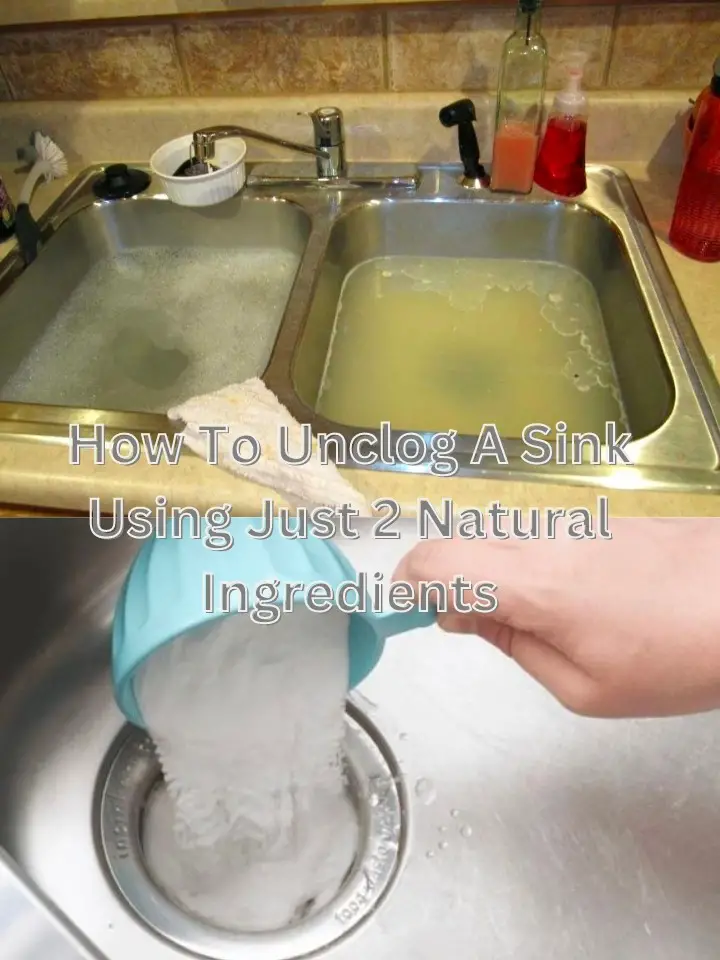Introduction
A clogged sink can disrupt your daily routine and lead to unpleasant odors and potential water damage. While commercial drain cleaners are readily available, they often contain harsh chemicals that can damage your plumbing and the environment. Fortunately, a natural and effective solution exists using common household items: baking soda and vinegar. This guide will walk you through the process of unclogging your sink using these two ingredients, provide additional tips for maintaining clear drains, and answer frequently asked questions.
Materials Needed
- 1 cup of baking soda
- 1 cup of white vinegar
- Sink stopper or a clean cloth
- Boiling water
- Measuring cups
- Optional: lemon juice for added freshness
Step-by-Step Instructions
Step 1: Remove Standing Water
If your sink has standing water, use a cup or bowl to remove as much as possible. This ensures the cleaning agents can directly reach the clog.
Step 2: Add Baking Soda
Pour 1 cup of baking soda directly into the drain. Use a funnel if necessary to prevent spills.
Step 3: Add Vinegar
Slowly pour 1 cup of white vinegar into the drain over the baking soda. The mixture will fizz and bubble, which helps break down the clog.
Step 4: Cover the Drain
Immediately cover the drain with a sink stopper or a clean cloth. This keeps the reaction concentrated in the drain.
Step 5: Wait
Allow the mixture to sit for 30 minutes. During this time, the chemical reaction works to dissolve the clog.
Step 6: Flush with Boiling Water
After 30 minutes, boil a kettle of water. Carefully remove the drain cover and slowly pour the boiling water down the drain to flush out the loosened debris.
Tips for Success
- Regular Maintenance: Perform this cleaning method monthly to prevent clogs.
- Use Lemon Juice: For a pleasant scent, add a few tablespoons of lemon juice after the vinegar.
- Avoid Harsh Chemicals: Refrain from using chemical drain cleaners in conjunction with this method to prevent reactions.
- Prevent Future Clogs: Use drain strainers to catch hair and food particles.
Frequently Asked Questions
Q: Can I use this method for a completely blocked sink?
A: This method is best for slow drains or minor clogs. For complete blockages, mechanical methods like plunging or using a drain snake may be necessary.
Q: Is it safe for all types of pipes?
A: Yes, baking soda and vinegar are safe for most plumbing systems, including PVC and metal pipes.
Q: How often should I clean my drains using this method?
A: Monthly cleaning is recommended to maintain clear drains and prevent buildup.
Q: Can I use apple cider vinegar instead of white vinegar?
A: Yes, apple cider vinegar can be used, though white vinegar is typically more effective for cleaning purposes.
Q: What if the clog persists after treatment?
A: If the clog remains, consider repeating the process or using a mechanical method. Persistent issues may require professional plumbing assistance.
Final Thoughts
By following this natural and effective method, you can keep your sinks running smoothly without resorting to harsh chemicals. Regular maintenance and mindful usage can prevent future clogs and ensure a healthy plumbing system.

